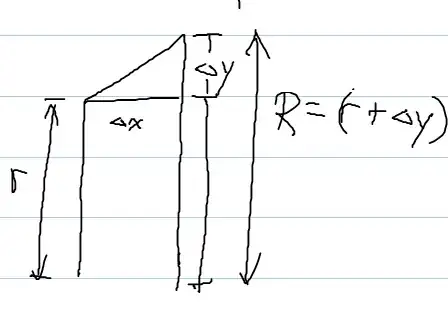I was interested by this question in finding the volume of a solid of revolution using a "more accurate" cone frustum instead of the usual cylindrical disk.
So, starting with the volume of a cone frustum $ V = \frac{\pi}{3} ( R^2 + r^2 + Rr ) $, compute:
 $$
\frac{\pi}{3}( (r+ \Delta y)^2 + r^2 + (r+ \Delta y)(r) ) \Delta x
$$
$$
\frac{\pi}{3}( (r+ \Delta y)^2 + r^2 + (r+ \Delta y)(r) ) \Delta x
$$
$$ = \frac{\pi}{3}( 3r^2 + 3 r \Delta y + \Delta y^2 ) \Delta x $$
Which is interesting, because the regular disk formula comes out if you ignore the $ \Delta y $ terms, which means you're assuming the cone is actually a cylinder.
I'm not sure how to finish this though! How can I work with $ \Delta y $ to create an integral formula?